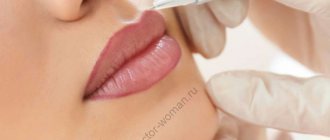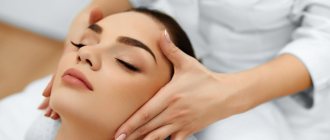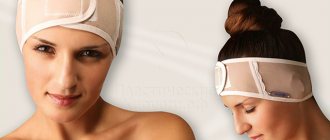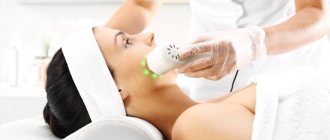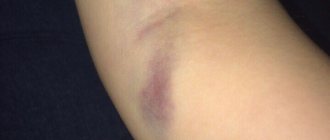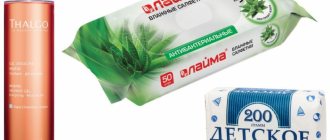Microblading allows you to achieve the most natural results
Microblading is the latest technology in eyebrow architecture. The procedure allows you to achieve incredible results. Even with a detailed examination, the eyebrows look natural and voluminous. Unraveling the secret of the owner of gorgeous eyebrows is beyond the power of even the most meticulous envious people.
Much depends on the quality of the procedure. But for the result to be perfect, it is important to know how to care for your eyebrows after microblading.
Features of care
Caring for a surface treated with a microblade should be divided into several stages, because the healing process can be divided into such stages. So, care:
- immediately after the procedure;
- first 24 hours;
- on days 2-7;
- in the 2nd week;
- at 3-4 weeks;
There are standard recommendations and means used to maintain the normal condition of the treated area of the face. But your specialist's advice may vary. I recommend listening to him, because he sees you personally, your skin, reaction to the pigment and procedure, and can give detailed and competent advice “tailored to you.”
When can you wash your face after powder spraying? How to wash your hair safely after tattooing
You should not wet the scabs after the eyebrow permanent procedure for the first few days until they come off. In some cases this happens after a few weeks. It is necessary to maintain personal hygiene during the period of formation and peeling of crusts on the tattoo.
For 3 days after the salon procedure, you should not wash your hair to avoid getting water on your eyebrows. It is better to do this the day before the procedure. It will eliminate the need to wash your hair in the first days of the rehabilitation period and expose damaged skin to contact with water.
After the three-day period, you can wash your hair with shampoo or soap. However, you should wash as carefully as possible, tilting your head back. It is important to avoid splashing your face and eyebrows. Do not wet your forehead or the tattooed area.
You can ask your loved ones to help wash your hair after applying the permanent.
You can resort to dry washing. Special powdered shampoos, starch or talc are applicable.
You can wash your face after eyebrow tattooing, avoiding healing areas. You should use cleansing lotions, tonics, and cosmetic milk. This hygiene procedure is suitable for the part of the face from the eyes to the chin. It is advisable to wipe the area above the eyebrows with a damp cloth.
When taking a shower after the procedure, do not allow the jets to come into contact with your face. They should be directed towards the shoulders. It is not allowed to get your eyebrows wet in the shower.
When drying yourself, you should avoid using terry towels for your face. Do not rub the damaged area. It is advisable to blot your face with a napkin. If necessary, this is done for the tattooed area.
It is not allowed to tape your eyebrows after the procedure.
Fresh tattooing during the rehabilitation period cannot be treated with the following products:
- Hydrogen peroxide.
- Compositions containing an antibiotic.
- Lotions.
- It is forbidden to wet the eyebrow area after the procedure with alcohol tinctures.
- Ointments containing hormones.
- Essential oils.
You should not wet the tattooed area of the eyebrows for several weeks after applying the permanent until the skin is restored.
Standard care products
To treat skin after microblading you will need:
- Local antiseptics (Chlorhexidine).
- Agents that accelerate tissue regeneration and normalize cellular metabolism. For example, ointment with dexpanthenol: Dexpanthenol, Pantoderm, Bepanten.
- Emollients (cosmetic Vaseline).
These products will help avoid infection in micro-wounds, accelerate tissue healing and reduce the release of pigment from wound exudate. True, some experts believe that the only ointment that can be used is Vaseline. All other means affect the survival rate of the pigment.
Absolute contraindications
The main absolute contraindications to microblading are:
- The client has hepatitis, HIV infection, syphilis and AIDS. This restriction is not associated with risks for the client, but with the danger of infection of the specialist. If he has even small scratches or is accidentally injured during the procedure, the virus can enter the master’s body with the client’s blood, which is always released in greater or lesser quantities from the eyebrows being treated.
- Poor blood clotting and the presence of diseases leading to such a complication . In this case, there is a danger that the bleeding that occurs with this type of eyebrow tattoo is difficult and impossible to stop. Another problem is the subsequent strong washing out of the coloring pigment, as a result of which the eyebrow pattern will be blurred, unclear or uneven.
- Mental and neurological diseases. Such pathologies can provoke inappropriate behavior of the client during the procedure, and this is a threat to the health and life of himself and those around him.
- Insulin-dependent diabetes mellitus. With this disease, any type of tattoo will take several times longer to heal due to problems with the circulatory and vascular systems.
- Epilepsy. If an epileptic seizure occurs during the procedure, it will be impossible to continue it, and it is impossible to stretch the entire process even over two sessions with an interval of several days. After all, introducing pigment into unhealed skin means additional trauma and no guarantee of a quality result after healing.
- Oncological formations. When performing microblading, there is always a risk of infection in the body. And this happens quite often: beauty salons cannot provide absolutely sterile conditions, but you should not be afraid of this: in a healthy person, the body is able to cope with the causative agents of infectious diseases. In cancer patients, the body is weakened both due to the disease itself and due to chemotherapy, and any infection can be deadly.
- Predisposition to the formation of keloid scars . In such people, even small scratches after healing leave noticeable scars, since scar tissue forms faster and in larger volumes in the body. In the case of microblading, this is dangerous because such scars form on the eyebrows.
- The presence of dermatological rashes and moles on the eyebrows.
Note! In all these cases, microblading is prohibited.
And if a client, knowing about one of these contraindications, notifies the specialist about this and receives his consent to carry out the procedure, it is necessary to think about the competence of such a specialist.
In any normal salon,
the client will definitely be required to provide medical certificates confirming the absence of all these pathologies.
A qualified specialist will not perform microblading under any pretext if any of the listed pathologies are present.
Basic dogmas
The rules for caring for new eyebrows are quite simple. That's four no's and two yes's. Let's start with four "don'ts":
- Do not wet the area affected by micropigmentation for the first hours.
- Do not touch the eyebrows with your hands in the first days after the procedure, do not wipe the skin at the treatment site, but only blot it, do not scratch or tear off the scab.
- Do not sunbathe or visit a solarium for the first weeks after the procedure.
- Do not go to the gym, avoid physical work and avoid “hot” places and situations that promote sweating (it is not advisable for sweat to get on the wounds).
Let's move on to "yes" or what needs to be done. Firstly, you need to take care of your face using natural products that do not contain large amounts of fragrances, essential oils and other things. To wash your face, use baby soap or baby skin foam.
On the first day, the eyebrows are treated with a wound-healing ointment recommended by a cosmetologist. In the following days, if you feel dry in the eyebrow area, lubricate the skin with cosmetic Vaseline. Let's take a step-by-step look at how to care for your eyebrows during the rehabilitation period.
What to do if complications occur after the procedure?
First, I would like to answer the question: what can be done to avoid complications? After all, it is much easier to prevent than to treat.
Choose a good cosmetologist. It’s better to go to a beauty salon rather than at home. Look at photos of previous works. It would be best if one of your friends visited this master, and you yourself can evaluate what happened.
It is necessary to take into account that each organism is individual, so unpleasant consequences may arise:
— allergies (you will be bothered by itching, skin hyperemia, swelling);
— infection (violation of application technology and improper care after microblading);
- long-term healing (if the wounds become infected);
- the pigment will not take root and will fade quickly (perhaps your body simply does not accept the dye or your skin is too oily + improper care after microblading).
If after the procedure you experience severe inflammation, swelling, or something worries you, then it is better to play it safe and seek advice from a specialist. Only he will be able to correctly assess the situation and prescribe antihistamines.
A little more about microblading
Now you know that caring for eyebrows after micropigmentation is not difficult, but it requires scrupulousness and accuracy. Getting beautiful eyebrows is quite easy. The main thing is to find a good master.
But, unfortunately, the procedure is not available to everyone. Microblading has contraindications. Micropigmentation is not performed on persons:
- with mental disorders;
- cancer patients;
- with blood diseases;
- HIV-infected and syphilis patients;
- with diabetes mellitus;
- prone to the formation of keloids.
You should postpone the procedure if you are menstruating, you are pregnant, you have caught an acute respiratory viral infection, seasonal hay fever has begun, your asthma has worsened, or rashes have appeared on your face.
That's all for me. I hope that the information was interesting and useful for you and that you will visit my page again and share the information with your friends via social networks.
Panthenol after microblading. Advantages and disadvantages of eyebrow microblading
The main advantage of microblading is that it looks as close to natural as possible, because a specialist draws each hair, making its color, thickness, and direction individual, taking into account how natural hairs grow.
the ideal condition of the eyebrows is ensured by this procedure for a period of one to one and a half years
This is what attracts her fans.
Speaking about the benefits of micropigmentation, it makes sense to compare it with eyebrow tattooing, which also gives good and long-lasting results.
The benefits of microblading include:
- more natural-looking eyebrows can be created due to the fact that the needle penetrates shallowly, the coloring pigment is also located directly under the skin;
Microblading gives the effect of completely natural eyebrows
- wounds after microblading are less deep and less painful;
- swelling after the procedure is less and goes away quickly, healing is fast;
- the procedure itself is half as long;
- the color of the eyebrows is much more natural than with tattooing, when the paint often blurs, forming a continuous dark spot, individual hairs are not visible;
- There are no contraindications based on age. Microblading can be done at any age, if there is no intolerance to its components, which cannot but please all women.
The downside is that this procedure is quite new in our country, so there are not very many good specialists yet, which means that in order to be pleased with the result, specialists must be selected with special care. The disadvantages include the cost of the procedure, which is quite high.
How long does the effect of the procedure last?
The maximum effect of eyebrow microblading lasts up to 2 years, but more often this period is shorter – from a year to a year and a half. However, in order for the brow ridges to look properly all this time, it is necessary to carry out correction. The first adjustment is carried out 1 month after the first micropigmentation .
It is necessary, because after the crust comes off, the pigment partially disappears or becomes less bright. Subsequent adjustments should be made every six months . This will help keep your brow ridges in perfect condition.
